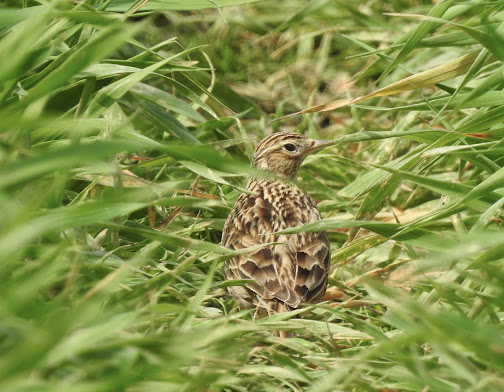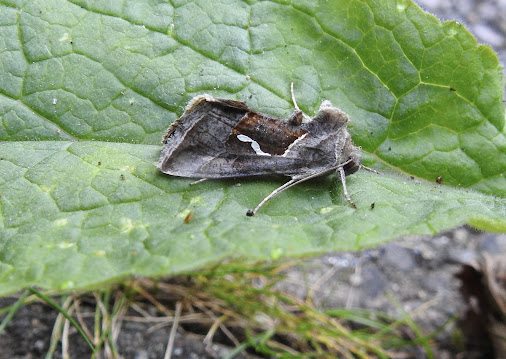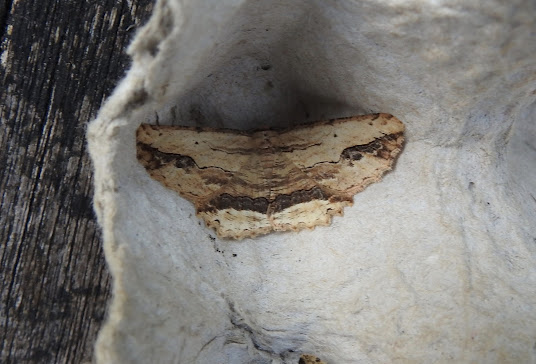Today's venue was the woods of the Ragley estate which spill into the southern edge of my recording circle. Specifically, Asplands Husk, Three Oak Hill Wood, and Coldcomfort Wood. A public footpath (and a road) borders Asplands Husk and runs through to Coldcomfort Wood. For the other one I had to tresspass, but was discovered and politely chucked off.
 |
| Coldcomfort Wood |
To be fair to the woods' owners there was evidence that they were opening some of them up by judicial forest management, and they looked good for birds (if only you were allowed to roam). Their principle focus may be deer management though, as the gamekeeper I met was keen to explain.
I did see some decent birds. The best was a very distant Hobby, my first of the year. Other notables were singing Garden Warblers, Cuckoos (two), and a Lesser Whitethroat by the road. Unfortunately none of these presented a photo opportunity so I had to rely on a Skylark which landed on the footpath between the crops and was presumably trying to lead me away from a nearby nest.
 |
| Skylark |
I thought I'd better get that in because the rest of the post concerns moths.
In Three Oak Hill Wood I stumbled across several Brown Silver-lines, a common woodland species which has yet to turn up in my garden, and also Common Carpet, with a Green Carpet at Asplands Husk. It's nice to see moths in their natural habitat rather than in and around a moth trap.
 |
| Brown Silver-line |
However I cannot finish this post without mention an epic moth-trapping session in my garden on Wednesday night.
Normally in early May I barely get double-figures, but the warm weather of the last few days has made all the difference. I caught 59 moths of 23 species, of which 16 were new for the year and one was new for the garden (and also a lifer).
The new one was a Dewick's Plusia. This is a species which is expanding its range northwards after only being recorded in the UK for the first time in 1991. For the next twenty years it was regarded as a south coast migrant, but then started breeding and reached the West Midlands maybe five or so years ago. Apparently they can be attracted to a pheromone lure for a related species and are not particularly drawn to light. So I counted myself doubly lucky when I saw it resting among the egg boxes.
 |
| Dewick's Plusia after being placed on a leaf. |
The year-ticks were largely ones you might expect in spring, but an honourable mention should go to the five Least Black Arches (I've never previously caught more than one a year), and a Waved Umber which was my first for three years (although it flew off when I tried to persuade it to pose in a better setting than the egg box).
 |
| Least Black Arches |
 |
| Waved Umber |
Almost all the moths were macros, but one of the few micros caught was probably a Vetch Moth Aproaerema anthyllidella. It is a very small one which cannot be safely identified to species level without taking a specimen (and I didn't).
 |
| Vetch Moth (probably) second for the garden. |
I've added all the year-ticks to the 2024 moth list page.
No comments:
Post a Comment